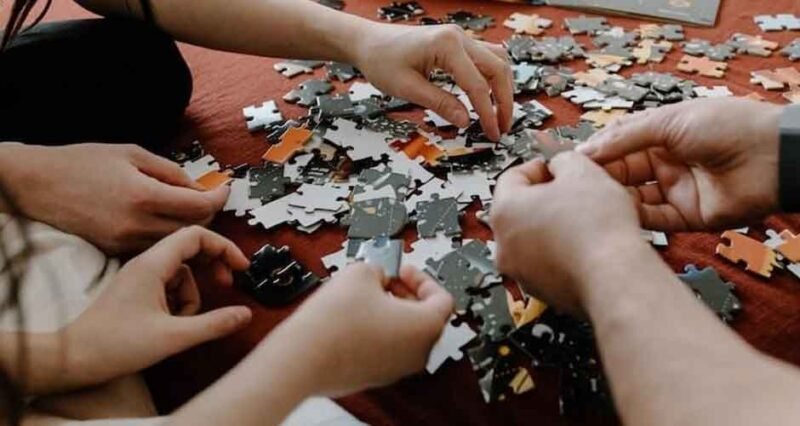
Puzzles have been around for thousands of years. From jigsaw puzzles to crosswords, these brain games have evolved over time while maintaining their core purpose – to challenge and entertain. This article explores the rich history of puzzles, their many benefits, and some of the most popular types of puzzles enjoyed today.
A Brief History of Puzzles
The earliest known puzzles date back to ancient times. For example, tangram puzzles emerged in China around the 7th century BC using seven geometric shapes to form silhouettes. In 16th century AD Europe, artisans created intricate wood and ivory jigsaw puzzles for royalty and the elite.
However, puzzles did not gain widespread popularity until the early 1800s. That’s when commercial jigsaw puzzles were produced in America and Europe using new die-cut technology. Furthermore, magazines like Pearson’s, The Illustrated London News, and The New York World helped popularize activities like crosswords in the early 1900s.
Since then, interest in puzzles has continuously grown, especially as more interactive digital puzzles emerged. Now, puzzles are a multi-billion dollar industry with fans across the globe.
The Many Benefits of Doing Puzzles
It’s easy to see why so many people love puzzles – they provide a wide range of benefits for the mind and body. Here are just a few of the top reasons you may want to add more puzzles into your life:
First, puzzles are a great way to sharpen focus and concentration. As you work through clues and fit pieces together, you engage in deep mental focus for extended periods. This can strengthen attention span and retention.
Additionally, puzzles help enhance problem-solving abilities and logical thinking. You are forced to evaluate visual information, seek patterns, and strategize solutions. These skills are highly transferrable to work and academics.
Puzzles also improve memory over time, especially in areas like spatial awareness, visual memory, and recall ability. The mental stimulation can even help reduce risks of cognitive decline and dementia.
On top of mental perks, puzzles provide relaxation and stress relief. The methodical nature creates a meditative escape that engages the brain while lowering anxiety and blood pressure.
Finally, puzzles are just plain fun! The sense of satisfaction from completing a challenging puzzles is huge for motivation and enjoyment. It also makes for an entertaining hobby to share with family and friends.
Popular Types of Puzzles
With benefits like improved cognition and simple entertainment, it’s easy to see why so many types of puzzles have become mainstays in households across the world. Here are some of the most popular varieties:
Jigsaw Puzzles
Jigsaw puzzles remain one of the most iconic and beloved types of puzzles. Participants assemble numerous interlocking and irregularly-shaped pieces into a complete image. They come in various piece counts, dimensions, and complexity levels to suit any age group.
Crosswords
Crossword puzzles similarly have stood the test of time. Players fill blank grids with words based on numbered clues, arranging letters horizontally and vertically. Crosswords flex vocabulary skills and lateral thinking.
Sudoku
Sudoku exploded in popularity in the past few decades. It involves placing the numbers 1-9 in a 9×9 grid made up of 3×3 subgrids. Each row, column, and subgrid can only contain each number once. It’s logic-based rather than language-based.
Word Searches
Word searches contain a grid of letters in which players search for hidden words. They can track vertically, horizontally, and diagonally in any direction. Besides strengthening pattern recognition, they boost vocabulary too.
Logic Puzzles
Logic puzzles offer more abstract challenges. Players analyze a described scenario and logically deduce solutions based on given clues and constraints. Popular examples include logic grid puzzles and the classic Rubik’s Cube.
Escape Rooms
Escape rooms take puzzles to a new immersive level. Groups work together to uncover clues and solve a series of puzzles in order to accomplish a goal in the allotted time. They require teamwork and quick thinking.
Conclusion
From ancient China to the digital age, puzzles have provided endless entertainment while also delivering powerful cognitive benefits. Major types like jigsaws, crosswords, Sudoku, and escape rooms all cater to different interests and skill levels.
Puzzles are great for sharpening memory, focus, and problem-solving regardless of age. Plus, they supply stress relief and satisfaction. There’s never been a better time to engage your mind and have fun with puzzles.


